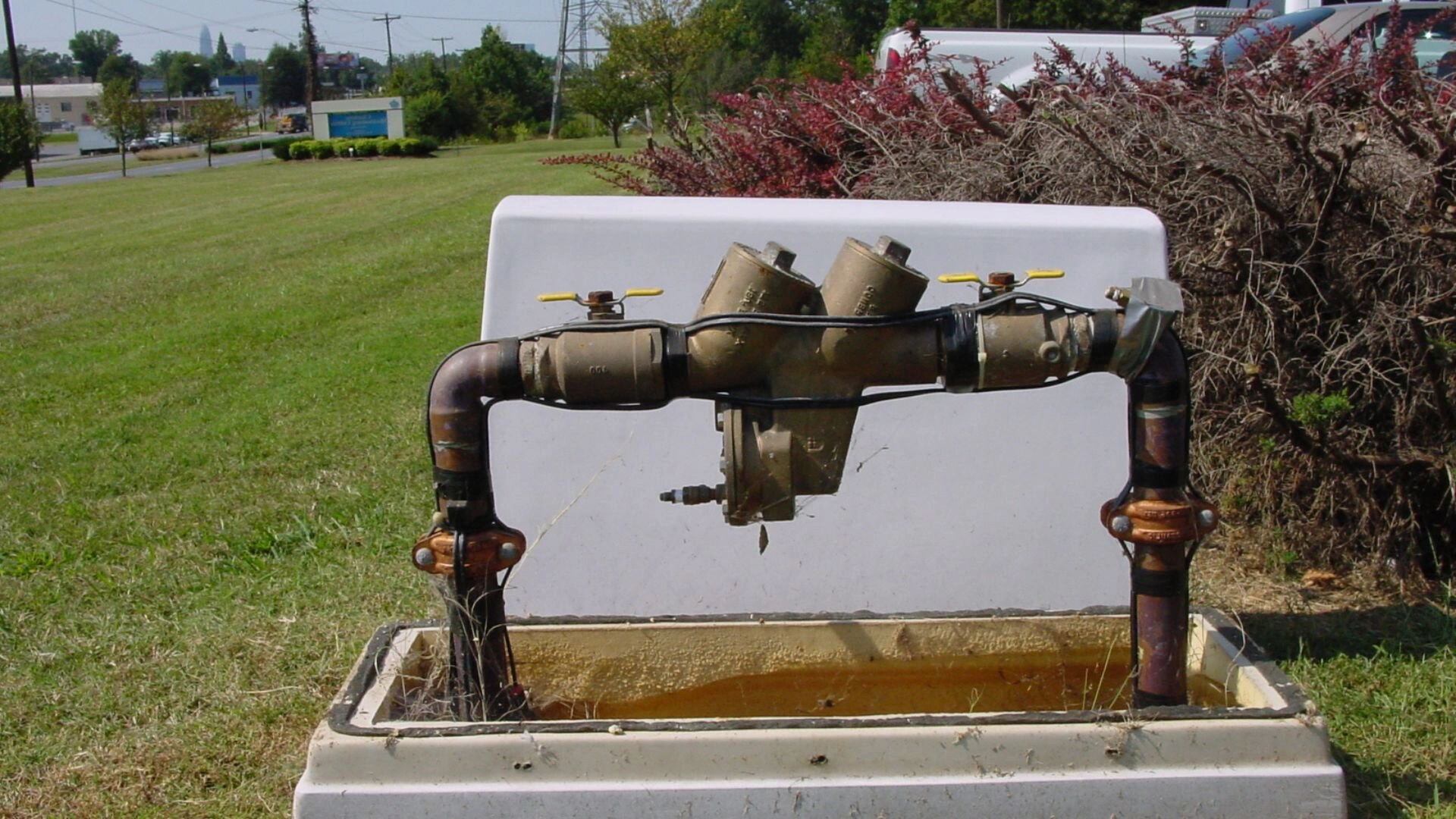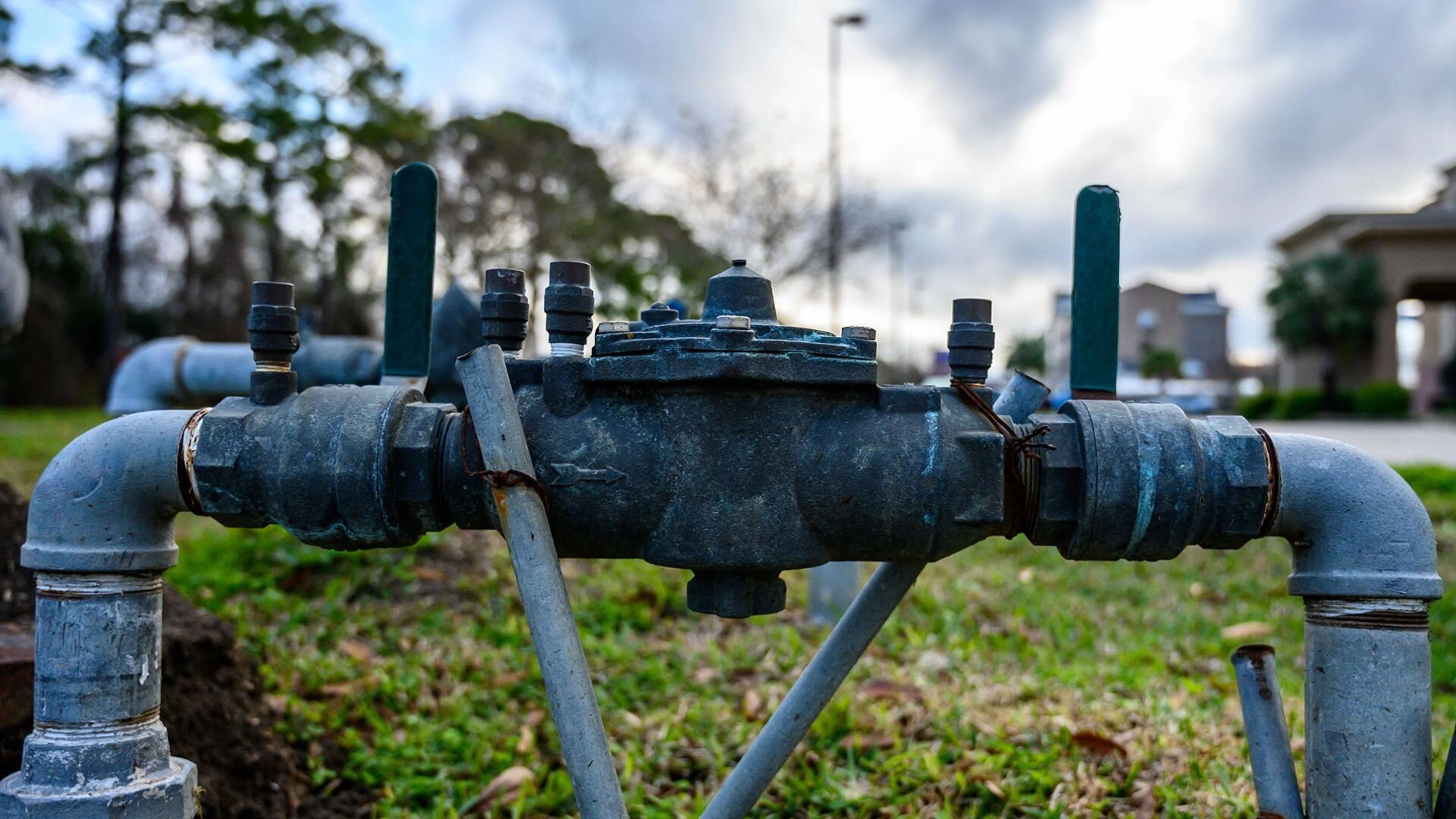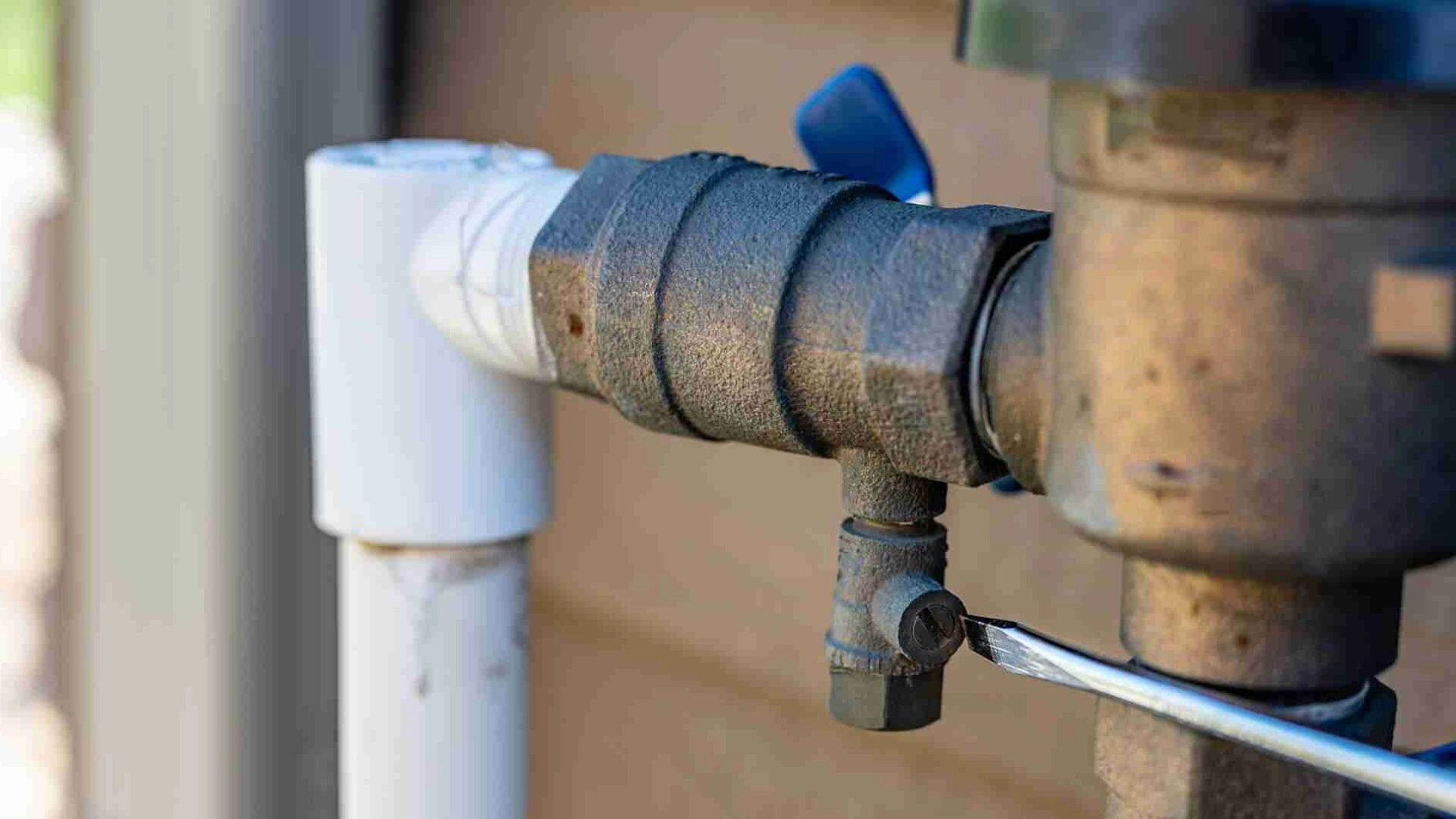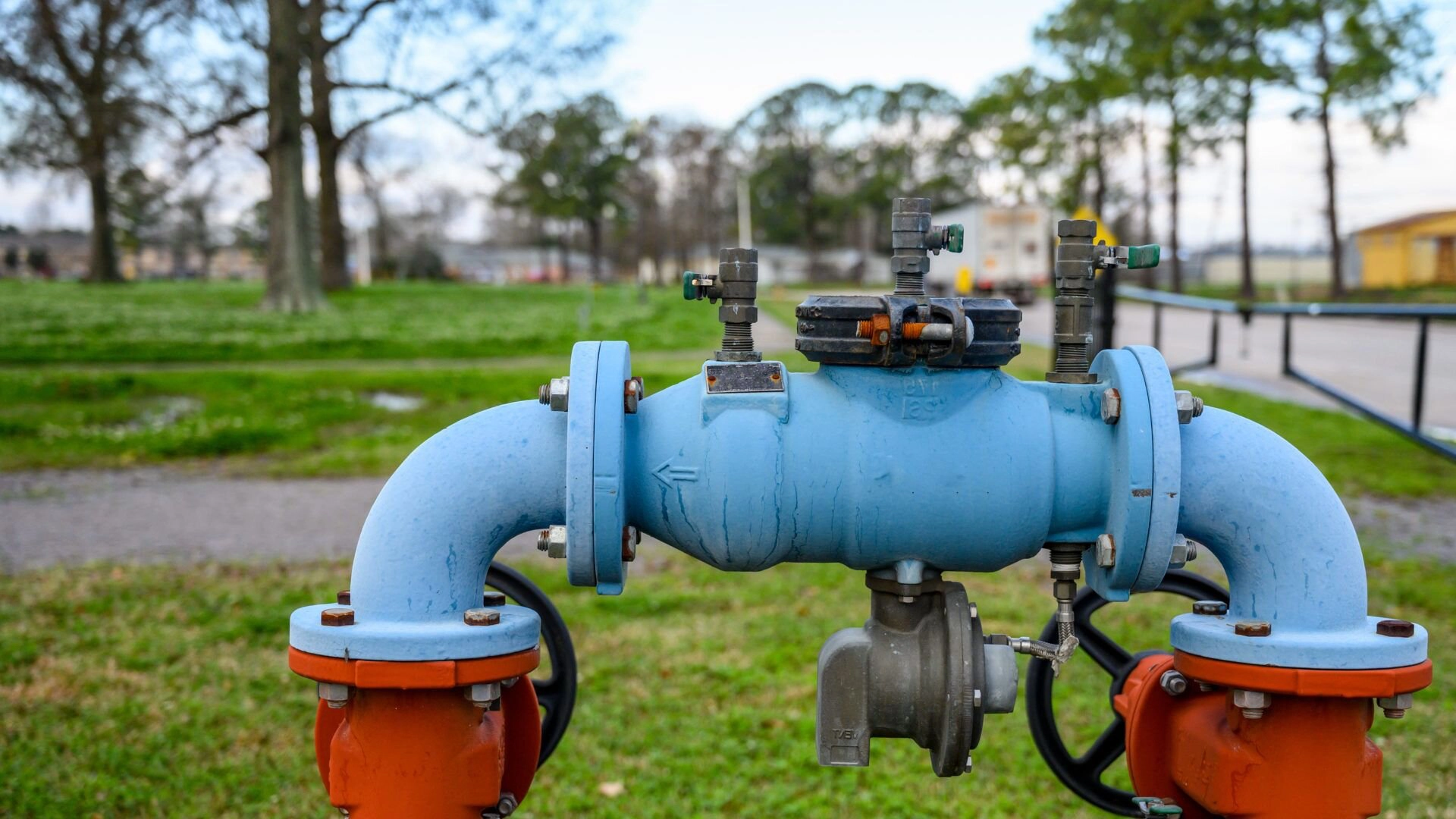Backflow Prevention and Testing Services for Commercial Facilities
Learn about backflow risks and prevention strategies for commercial facilities. This guide covers backflow causes, required testing, choosing a service provider, and protecting your building’s water supply.

As a facility manager, your building’s water supply safety is a major priority. However, ignoring potential backflow issues could make your facility vulnerable to severe health hazards and legal consequences.
Backflow occurs when water flows reversely from its intended path, siphoning potential contaminants into the potable water system . One backflow incident can introduce bacteria, chemicals, or other dangerous substances into your water supply.
This article will cover everything you need about backflow prevention and testing. You’ll learn about:
- The risks of backflow in commercial facilities
- Types of backflow prevention devices
- The importance of professional testing
- What to expect during testing
- Choosing a qualified testing service
With the proper prevention and testing measures, you can safeguard your facility against the substantial dangers of backflow.
The Dangers of Backflow in Commercial Facilities
Backflow presents a significant public health risk for various commercial facilities, including restaurants , office buildings, hospitals, schools, and retail stores. It occurs when the water flow reverses direction due to either back pressure or back-siphonage, allowing contaminants to enter the supply lines.
Potential sources of backflow contamination in commercial facilities include boiler systems, fire sprinkler systems, landscape irrigation systems, and various types of industrial equipment.

The consequences of backflow incidents can range from sickness due to ingesting bacteria like E.coli to severe injuries or burns from hazardous chemicals. Facilities may also face legal action, heavy fines from regulatory agencies, and significant reputational damage if backflow incidents impact customers or the public.
This massive risk to public health makes backflow prevention an extremely crucial consideration for commercial facility managers. Following proper backflow prevention strategies and testing procedures can help protect a facility against the substantial dangers posed by this issue.
Types of Backflow Prevention Devices
Specialised mechanical devices installed on water lines prevent backflow by allowing flow in only one direction. Common options include:
- Double check valve assemblies - Utilise two positive-sealing check valves
- Reduced pressure zone assemblies - Control back pressure with a relief valve
- Atmospheric vacuum breakers - Prevent back-siphonage in high-risk applications
- Pressure vacuum breakers - Shut off reverse flow from occurring
Commercial facilities often require several devices in strategic locations to provide layered protection. Qualified technicians conduct a thorough evaluation to ensure proper device selection and placement.
The Critical Need for Backflow Testing
Even the highest-quality backflow prevention devices require periodic inspection and testing. Critical components like rubber seals, check valves, and relief valves wear out over time despite proper installation. Testing identifies leaks, malfunctions, or performance losses that endanger the system’s safety.

Most jurisdictions legally mandate annual or biannual testing for commercial facilities to comply with regulations. However, professional backflow testing provides additional value. It confirms devices are currently working optimally to prevent health hazards. Regular testing allows early detection of faults before they escalate into failures. This enables proactive maintenance on your schedule, optimising device lifespans and facility budgets.
Documented testing demonstrates compliance if incidents occur, protecting your reputation . Ultimately, testing safeguards facility occupants and the public by verifying a well-protected water system.
With public health at stake, leveraging professional backflow testing services is an essential facility management strategy. Qualified technicians validate your system’s safety through rigorous inspections that adhere to all applicable standards. Trust only seasoned experts for this critical task.
What to Expect During Professional Backflow Testing
Experienced backflow testing technicians will thoroughly evaluate your devices following industry standard testing protocols:
Visual Inspection
First, technicians will visually inspect the physical backflow assembly for broken or corroded parts, damage, or external leaks that could indicate wear and impaired performance.
Operational Testing
Next, the technician will conduct operational testing by opening and closing valves, adjusting pressure, and observing functionality under different pressure conditions. This tests whether the backflow device reacts appropriately under simulated backflow events.
Detailed Data Recording
Throughout testing, the technician records critical pressure and flow readings and checks valve opening and closing times, valve leakage rates, and any observable pressure loss . All measurements are documented.
Comprehensive Assessment
Once testing is complete, the technician will compare the recorded results to local regulatory performance standards and manufacturer specifications to identify any failures or deficiencies requiring repair.
Formal Reporting
Finally, the client will receive a full written report detailing all test results, readings, photos, and a final pass/fail assessment. Any necessary repairs or replacements will also be recommended .
Backflow Prevention as a Proactive Maintenance Measure

Too many facility managers adopt a reactive mindset, delaying preventative maintenance until disasters strike. However, prevention is key to avoiding costly consequences for critical water safety issues like backflow.
Integrating proactive backflow testing into regular maintenance optimises benefits. Faulty devices are identified before hazards occur, enabling preemptive repairs on your schedule and budget. Compared to reacting after the fact, preventative testing dramatically reduces the risks of fines, lawsuits, or reputation damage from incidents. Ongoing performance evaluations provide peace of mind that your system maintains protection.
Facilities avoid the consequences of reactive thinking by making backflow prevention and testing priorities within a proactive maintenance plan . Staying vigilant with scheduled inspections and repairs enables significant savings and protection from potentially disastrous incidents over the long term. Don’t wait for failure—make backflow prevention a core component of your facility’s safety culture.
Choosing a Trusted Backflow Prevention Service
For your facility’s backflow prevention, you should not leave system management and testing in unqualified or inexperienced hands. Instead, it is wise to contract reputable professional services that ensure proper compliance and functionality.
When selecting a backflow prevention service , look for providers with extensive expertise in conducting testing and inspections for commercial facilities of all types. Confirm they adhere to all local regulatory standards and requirements.
The testing process should involve comprehensive evaluations of each device rather than just quick checks. Detailed reporting with photos, recorded data, and recommendations is essential. Look for a stellar reputation earned through proven experience servicing commercial backflow prevention systems.
Ultimately, you want to trust the safety of your facility’s water system to certified professionals specialising in backflow prevention. Take the time to carefully evaluate potential service providers before making a decision.
Key Considerations
- Simple Backflow Prevention Device : Ensure the service provider can handle everything from simple backflow prevention devices to more complex systems.
- Backflow Prevention Device Installation : Verify that the provider is adept at installing backflow prevention devices in your plumbing system.
- Test Backflow Prevention Devices : The ability to thoroughly test backflow prevention devices is critical for ensuring your system’s safety.
- Annual Backflow Testing : Look for services that offer annual backflow testing to maintain compliance and functionality.
- Backflow Devices : Ensure the provider has experience with various backflow devices, including reduced pressure zone devices.
- Water Pressure : Proper testing should include assessments to ensure optimal backflow device performance.
- Backflow Prevention Services : Comprehensive backflow prevention services should include installation, testing, maintenance, and reporting.
- Contaminated Water Prevention : Effective backflow prevention is essential to avoid potentially contaminated water entering your clean water supply.
- Accredited Backflow Plumbers : Choose services that employ accredited backflow plumbers for reliable and certified work.
- Plumbing System Expertise : The provider should deeply understand your facility’s plumbing system to install and test backflow prevention devices effectively.
By considering these factors, you can select a backflow prevention service that ensures the safety and compliance of your facility’s water system.
Protect Your Facility with Professional Backflow Prevention
As we’ve covered, backflow prevention is an indispensable part of risk management for commercial facilities. But, it only works when properly implemented and consistently maintained through testing.
Don’t gamble with the health of your facility occupants and water security. Work with a trusted backflow prevention provider who can conduct a comprehensive site assessment of your current water system to determine appropriate backflow solutions matching your unique risk profile. Look for a provider that oversees certified installation and repair services and maintains ongoing compliance through professional testing.
At Service First Sydney , our experienced backflow testing technicians have decades of experience helping facilities protect their water systems. We follow a thorough inspection and evaluation process to provide accurate results, expert recommendations, and complete compliance reporting.
or request a free quote to upgrade your partner with a backflow prevention leader to safeguard your facility, occupants, and the community. Don’t leave water safety to chance—let our team of commercial plumbing experts ensure you have the right prevention strategy and testing regimen in place. Call, email, or visit our website today to get started.